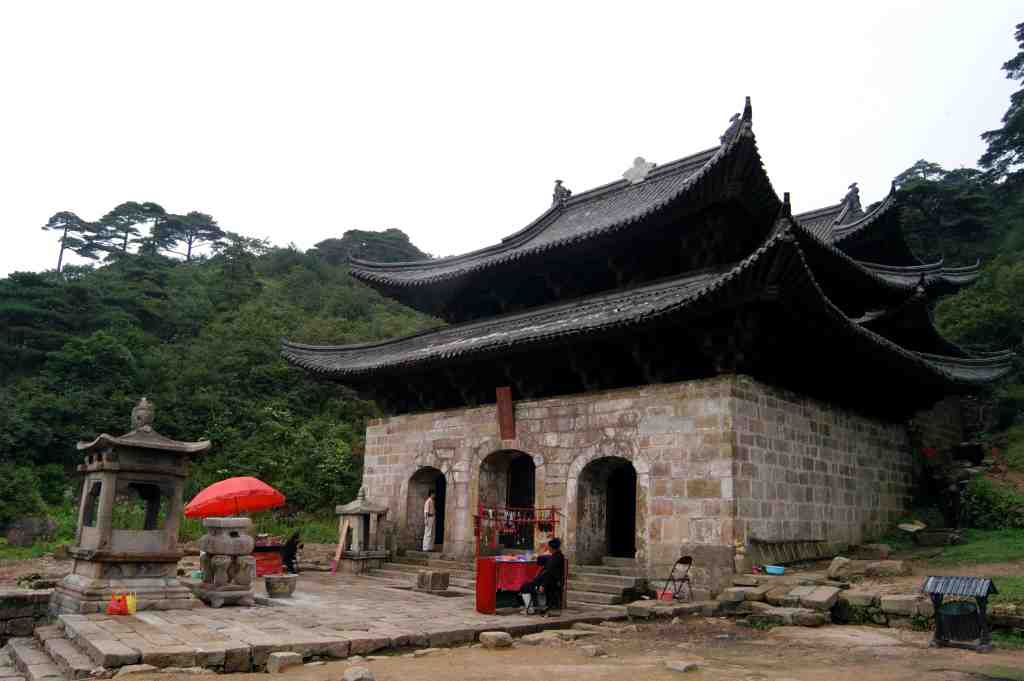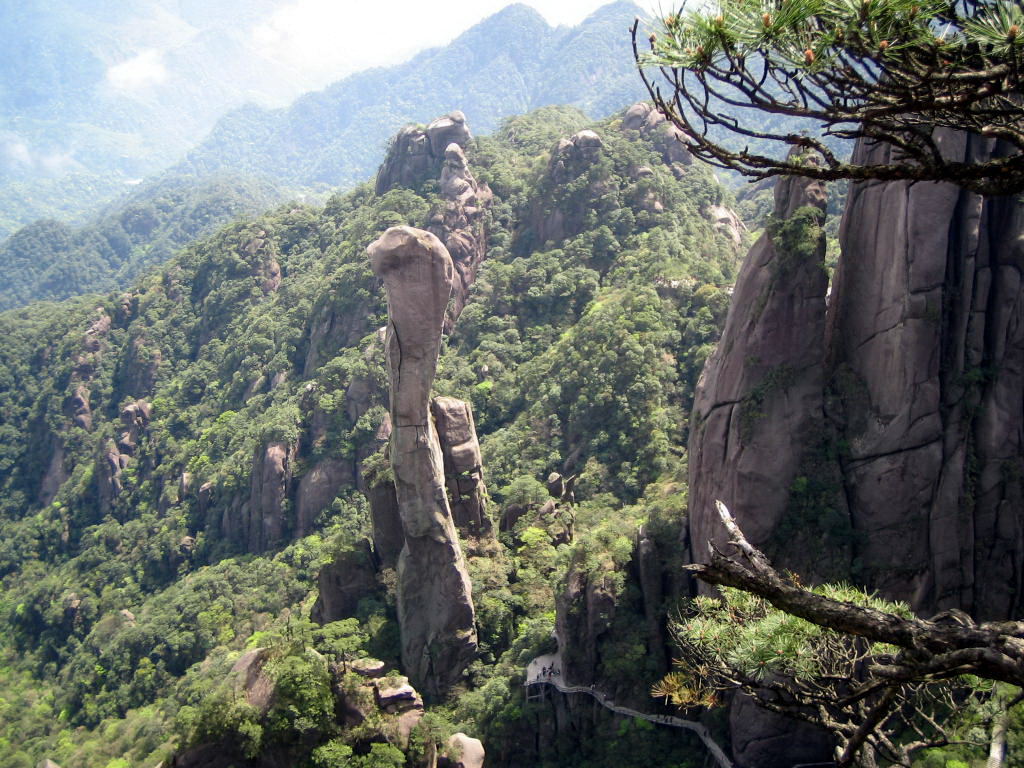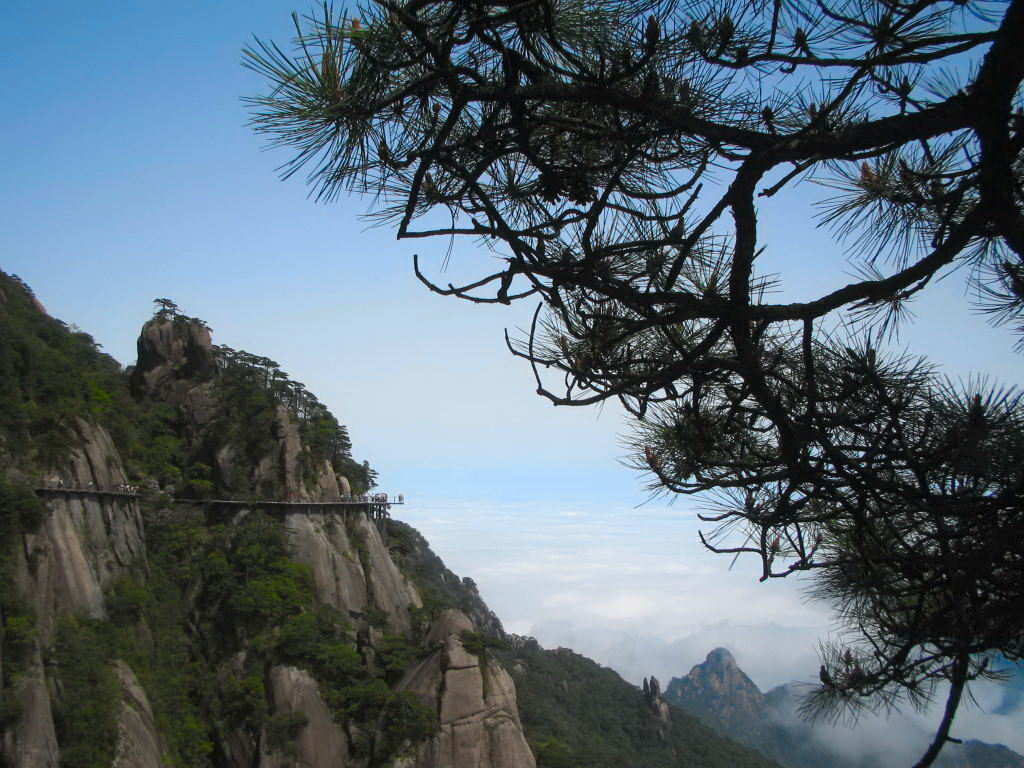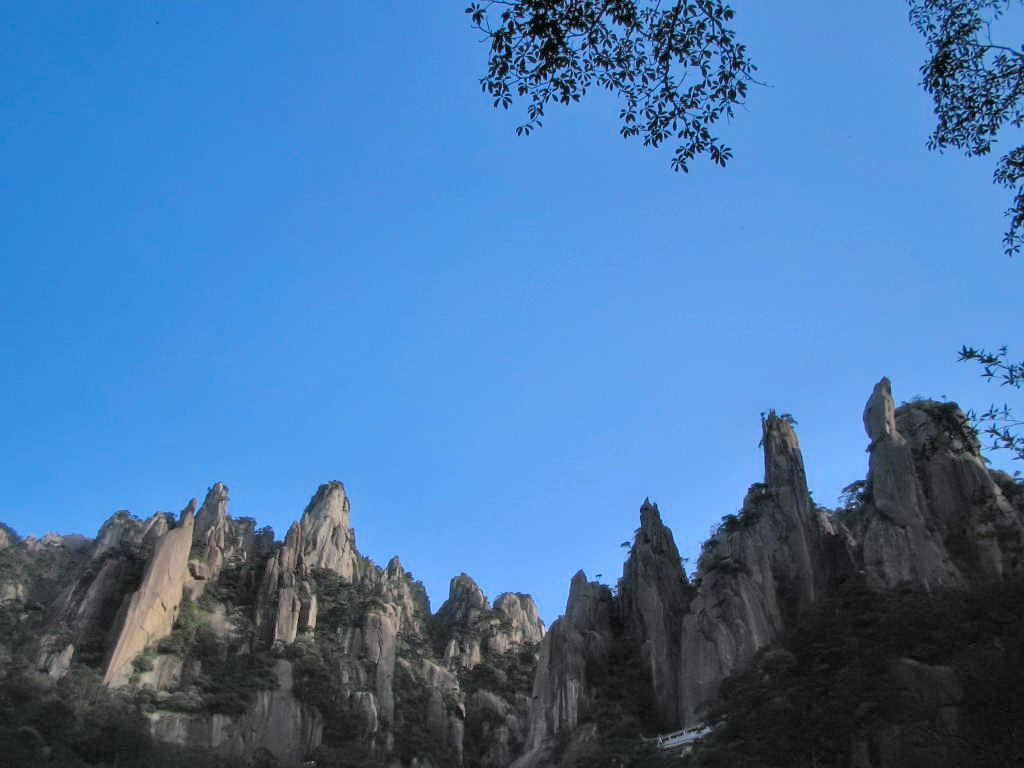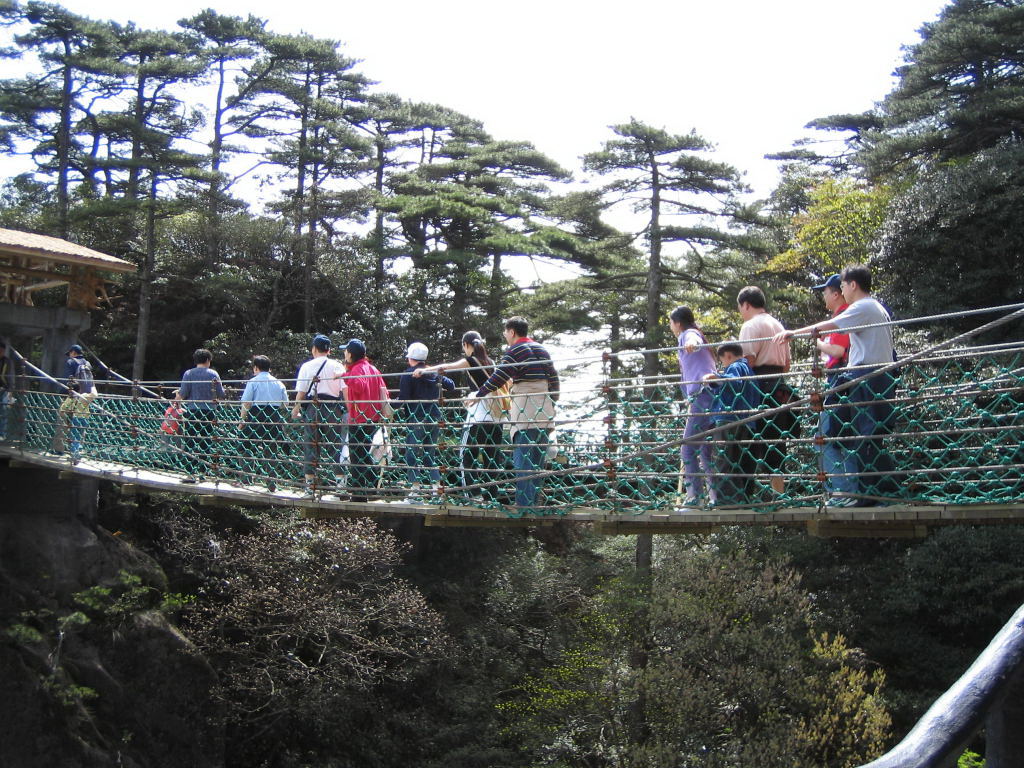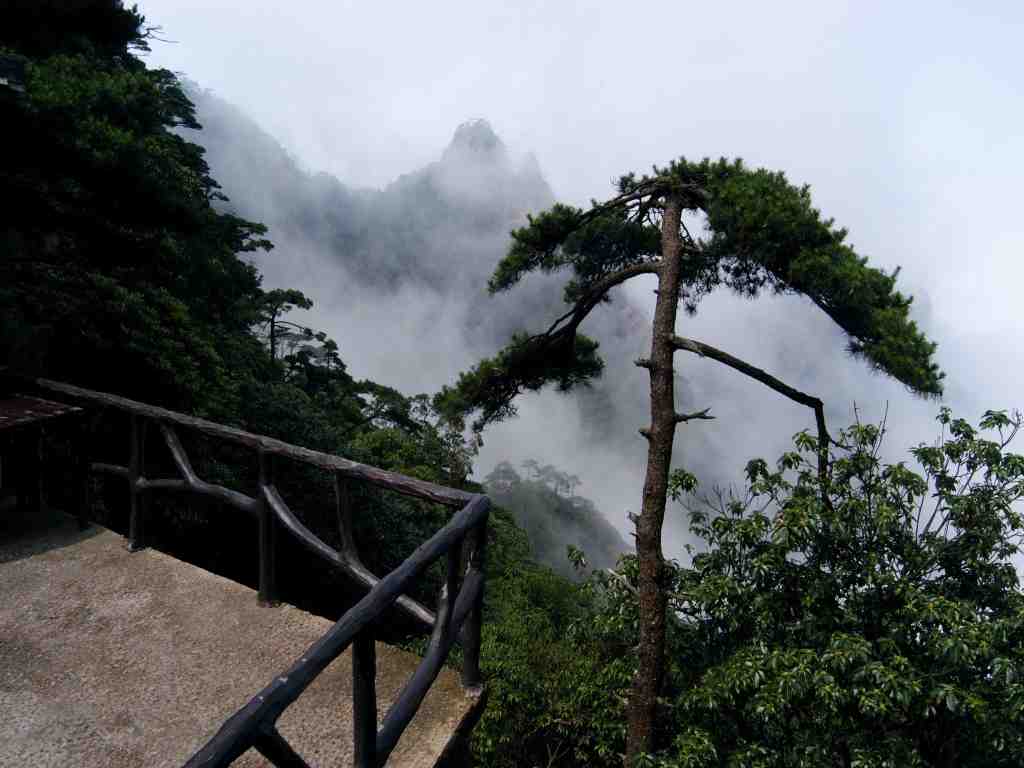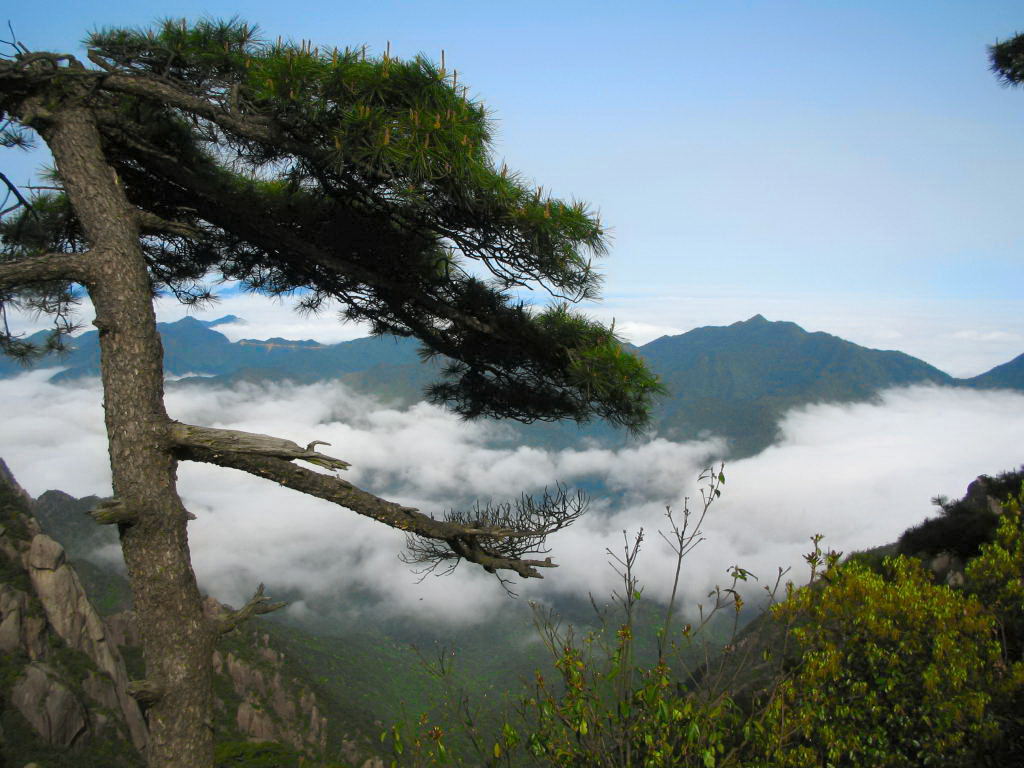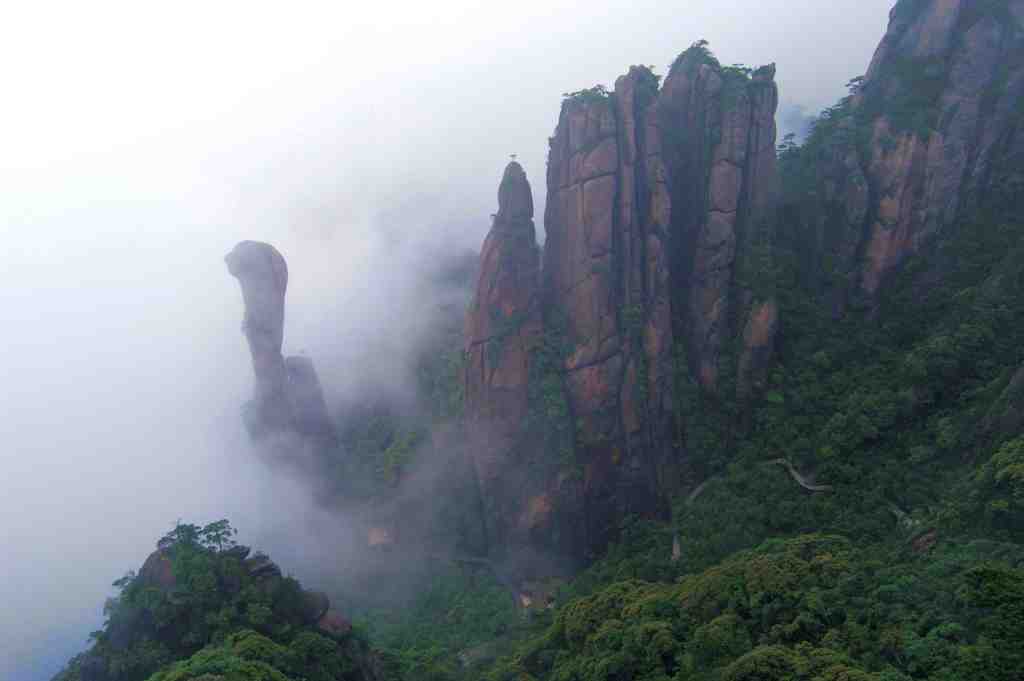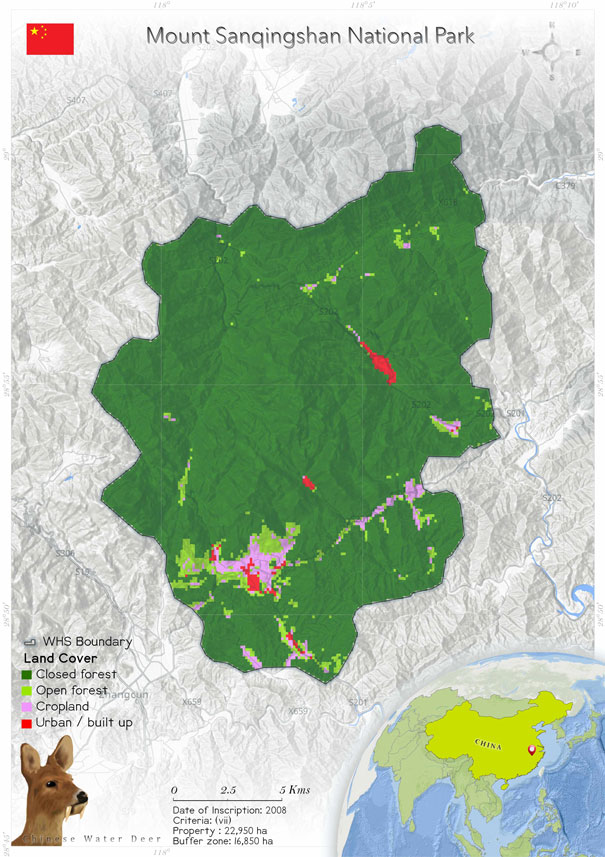
Mount Sanqingshan National Park (1292)
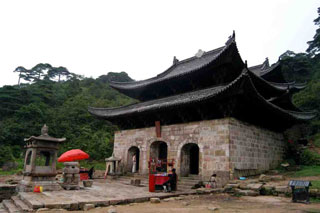 Mount Sanqingshan National Park is a property of exceptional beauty. The fantastic granite formations, striking meteorology and luxuriant forest give the property its aesthetic value and led to its inscription as a UNESCO World Heritage Site in 2008. The property is also an important space for priests and followers of Taoism. The Dragon Tiger Hall and the Sanqing Palace are two of the many Taoist relics in the property. Mount Sanqingshan National Park is very well protected from threats as the geography of the site acts as a natural defence system. At present, growing tourism is a potential threat for the site.
Mount Sanqingshan National Park is a property of exceptional beauty. The fantastic granite formations, striking meteorology and luxuriant forest give the property its aesthetic value and led to its inscription as a UNESCO World Heritage Site in 2008. The property is also an important space for priests and followers of Taoism. The Dragon Tiger Hall and the Sanqing Palace are two of the many Taoist relics in the property. Mount Sanqingshan National Park is very well protected from threats as the geography of the site acts as a natural defence system. At present, growing tourism is a potential threat for the site.
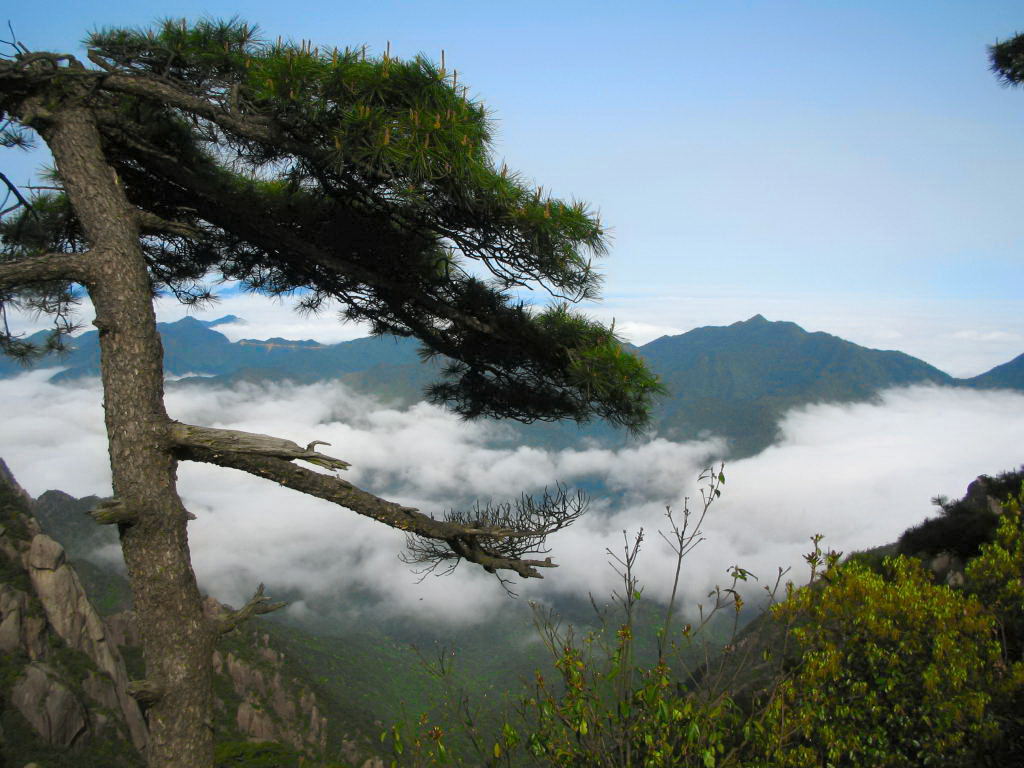 Located in the northeast of Jiangxi in the western range of Huyaiyu Mountain is the serene Mount Sanqingshan National Park. The property has a collection of 89 pictographic landforms along with 48 individual peaks. The property comprises World’s one of the most spectacular granite landscapes, an important site to study the evolution of these granite formations (UNESCO 2008). The diverse range of landforms includes: peak wall, stone forest, overlapped peaks, rock cliff, gorge, peak pillar, peak cluster and most remarkable pictographic stone. The pictographic stones are naturally sculpted rock that resembles features of an animal or a human and are quite exceptional. “Gigantic Boa” and “Oriental Goddess” are the most celebrated pictographic stones (Nomination file 2008). The beauty of the heritage is enhanced by luxuriant forest and vegetation. Three fracture zones, namely, the Fenglin- Zihu Fracture Zone, the Xiaokeng-Plantain Dock Fracture Zone and the Egongling-Xiaxikeng Fracture Zone gives a triangular pattern to the mountain (Huadong 2013). 2,373 species of higher plants and 401 species of vertebrates reside within the property (Nomination file 2008). Mount Sanqingshan is one of the important places of Taoist people since the East Jin Dynasty (317- 420 AD). Some of the religious relics of Taoist culture are still present at the heritage site, like the Wind & Thunder Tower, the Dragon Tiger Hall and the Sanqing Palace. Even the name of Mount Sanqingshan originated from the three peaks “Three Pure Ones” (three highest Taoist deities, Yuqing, Shangqing and Taiqing) from the Taoist scriptures (Huadong 2013).A number of springs, lakes and waterfalls also aids to the aesthetic value of the property. The world heritage is also a designated Geopark for the geological treasure that it has been for years. Mount Sanqingshan due to its height experiences altitudinal variation in climate with an annual average rainfall of 1857.7 mm (Nomination file 2008).
Located in the northeast of Jiangxi in the western range of Huyaiyu Mountain is the serene Mount Sanqingshan National Park. The property has a collection of 89 pictographic landforms along with 48 individual peaks. The property comprises World’s one of the most spectacular granite landscapes, an important site to study the evolution of these granite formations (UNESCO 2008). The diverse range of landforms includes: peak wall, stone forest, overlapped peaks, rock cliff, gorge, peak pillar, peak cluster and most remarkable pictographic stone. The pictographic stones are naturally sculpted rock that resembles features of an animal or a human and are quite exceptional. “Gigantic Boa” and “Oriental Goddess” are the most celebrated pictographic stones (Nomination file 2008). The beauty of the heritage is enhanced by luxuriant forest and vegetation. Three fracture zones, namely, the Fenglin- Zihu Fracture Zone, the Xiaokeng-Plantain Dock Fracture Zone and the Egongling-Xiaxikeng Fracture Zone gives a triangular pattern to the mountain (Huadong 2013). 2,373 species of higher plants and 401 species of vertebrates reside within the property (Nomination file 2008). Mount Sanqingshan is one of the important places of Taoist people since the East Jin Dynasty (317- 420 AD). Some of the religious relics of Taoist culture are still present at the heritage site, like the Wind & Thunder Tower, the Dragon Tiger Hall and the Sanqing Palace. Even the name of Mount Sanqingshan originated from the three peaks “Three Pure Ones” (three highest Taoist deities, Yuqing, Shangqing and Taiqing) from the Taoist scriptures (Huadong 2013).A number of springs, lakes and waterfalls also aids to the aesthetic value of the property. The world heritage is also a designated Geopark for the geological treasure that it has been for years. Mount Sanqingshan due to its height experiences altitudinal variation in climate with an annual average rainfall of 1857.7 mm (Nomination file 2008).
Criterion (vii)
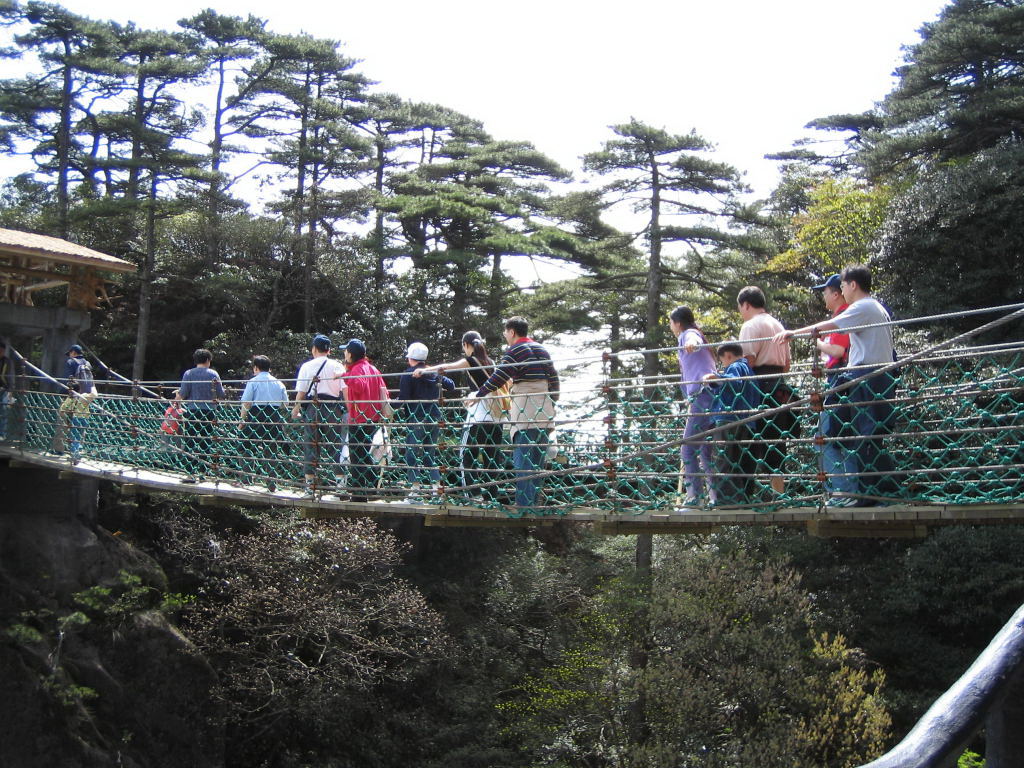 Superlative natural phenomena or natural beauty: Mount Sanqingshan’s remarkable granite rock formations combine with diverse forest, near and distant vistas, and striking meteorological effects to create a landscape of exceptional scenic quality. The most notable aspect is the concentration of fantastically shaped pillars and peaks. The natural beauty of Mount Sanqingshan also derives from the juxtaposition of its granite features with the mountain’s vegetation enhanced by meteorological conditions which create an ever-changing and arresting landscape. The access afforded by suspended walking trails in the park permits visitors to appreciate the park’s stunning scenery and enjoy its serene atmosphere.
Superlative natural phenomena or natural beauty: Mount Sanqingshan’s remarkable granite rock formations combine with diverse forest, near and distant vistas, and striking meteorological effects to create a landscape of exceptional scenic quality. The most notable aspect is the concentration of fantastically shaped pillars and peaks. The natural beauty of Mount Sanqingshan also derives from the juxtaposition of its granite features with the mountain’s vegetation enhanced by meteorological conditions which create an ever-changing and arresting landscape. The access afforded by suspended walking trails in the park permits visitors to appreciate the park’s stunning scenery and enjoy its serene atmosphere.
Status
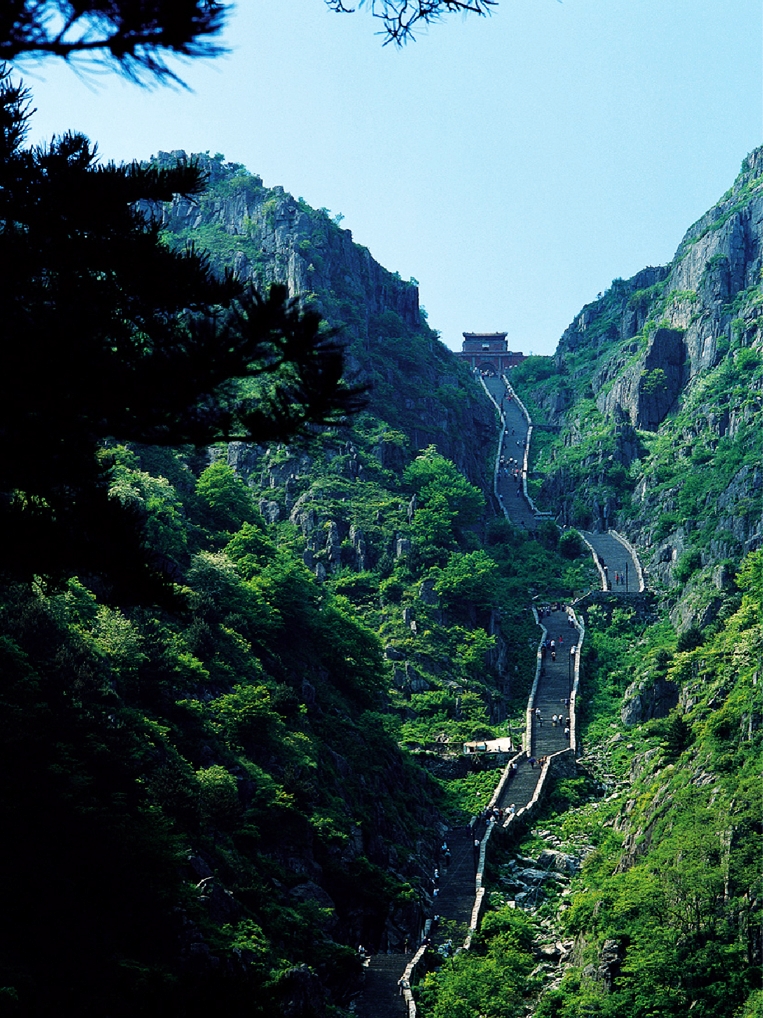 The inscription of the property as a UNESCO World Heritage stimulated a natural desire among the local and the tourists to protect the heritage site and its Outstanding Universal Value. Su et al. (2016) studied the effect of relocation and livelihood change on residents of Yinhuwan, at the main entrance of the Mount Sanqingshan tourist area. Earlier, the traditional livelihood at the site centred around agriculture and the forest, but once the tourism developed, the livelihood shifted to tourism-based activities. The residents benefited from the resettlement and the tourism-based livelihood as the economy grew stronger. But the economic benefits are not evenly distributed, and the lifestyle is changing. The reason might be poor planning and implementation of the resettlement plan. The local stakeholders are the main pillar of any property, and they play a very important role in its conservation and protection. They should be included in the planning and implementation of strategies related to the site. Networking is another important factor for the protection and management of the property. The Tourism Geographical Information System (TGIS) is a vital system in this context. TGIS collects tourism geographic information that can be analysed later in a database. According to the 2020 IUCN World Heritage Outlook (Mount Sanqingshan National Park | World Heritage Outlook (iucn.org)), the property has been assessed as “Good”. The assessment found that the natural defences of the property make it resilient to the threats. The site is defended by the inaccessible terrain, and confined physical dimensions. Growing tourism is a concern, but significant efforts are being made to manage and address the potential threat. The overall picture of Mount Sanqingshan National Park reveals that the World Heritage inscription has had a major positive impact on the conservation, management, monitoring and protection of the natural heritage site.
The inscription of the property as a UNESCO World Heritage stimulated a natural desire among the local and the tourists to protect the heritage site and its Outstanding Universal Value. Su et al. (2016) studied the effect of relocation and livelihood change on residents of Yinhuwan, at the main entrance of the Mount Sanqingshan tourist area. Earlier, the traditional livelihood at the site centred around agriculture and the forest, but once the tourism developed, the livelihood shifted to tourism-based activities. The residents benefited from the resettlement and the tourism-based livelihood as the economy grew stronger. But the economic benefits are not evenly distributed, and the lifestyle is changing. The reason might be poor planning and implementation of the resettlement plan. The local stakeholders are the main pillar of any property, and they play a very important role in its conservation and protection. They should be included in the planning and implementation of strategies related to the site. Networking is another important factor for the protection and management of the property. The Tourism Geographical Information System (TGIS) is a vital system in this context. TGIS collects tourism geographic information that can be analysed later in a database. According to the 2020 IUCN World Heritage Outlook (Mount Sanqingshan National Park | World Heritage Outlook (iucn.org)), the property has been assessed as “Good”. The assessment found that the natural defences of the property make it resilient to the threats. The site is defended by the inaccessible terrain, and confined physical dimensions. Growing tourism is a concern, but significant efforts are being made to manage and address the potential threat. The overall picture of Mount Sanqingshan National Park reveals that the World Heritage inscription has had a major positive impact on the conservation, management, monitoring and protection of the natural heritage site.
